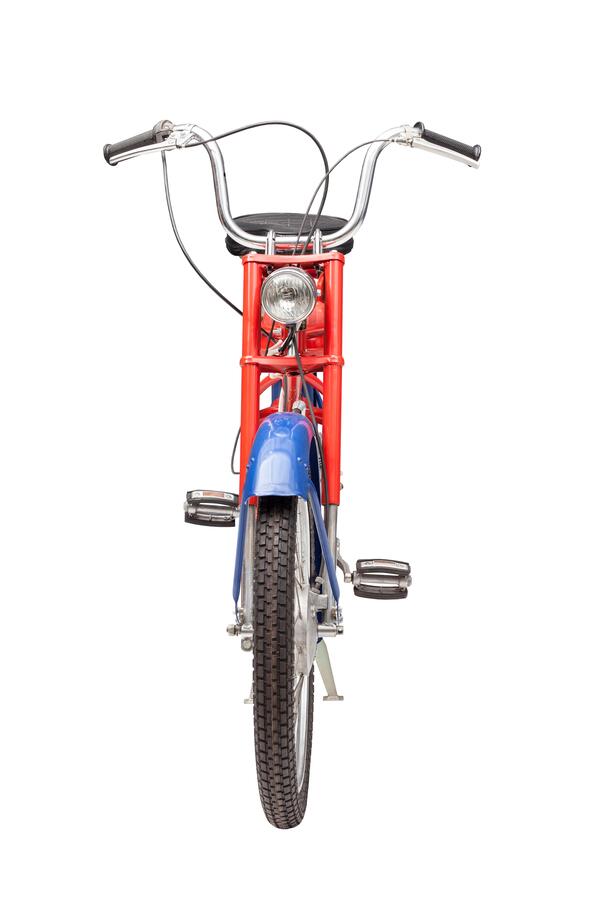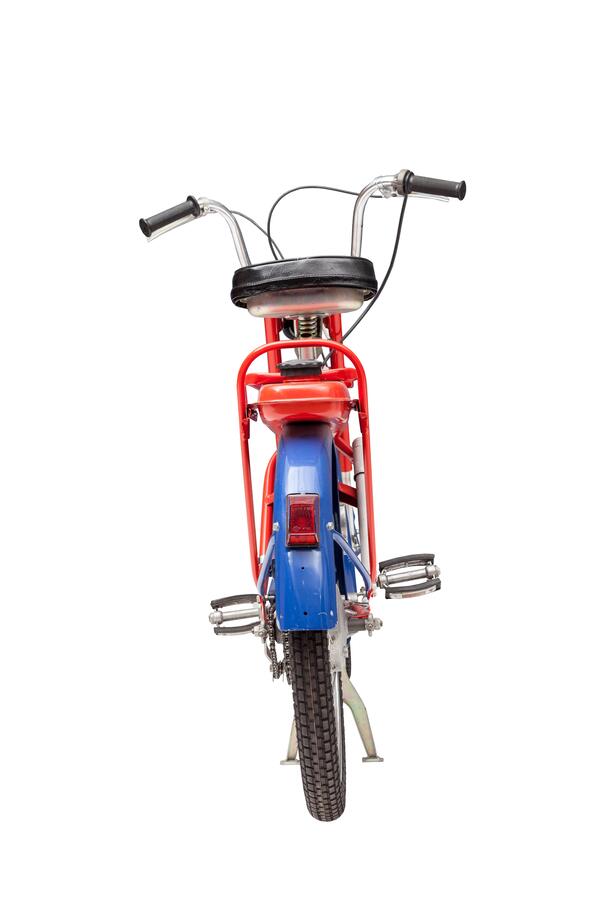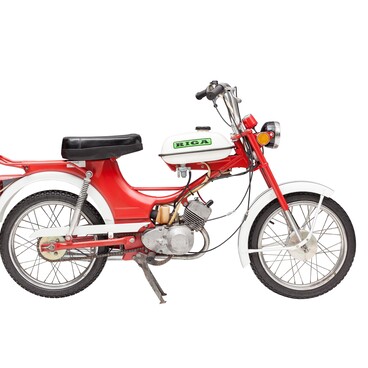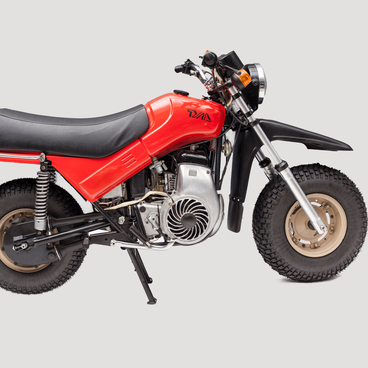In 1976, the Sarkanā Zvaigzne Factory in the Latvian capital replaced the Riga-7 light moped with the new model Riga-11. The factory tests ended in July 1975. The first batch of 200 mopeds was produced in February 1976. During that period, the bench test laboratory was headed by Vladimir Ignatyev.
The designers I.Ya. Ozolin, O.A. Valeyko, G.A. Gludin, and V.Ya. Alksnis introduced many changes to the improved model. At the same time, they managed to make an attractive bike.
The Riga-11 was equipped with a backbone frame that consisted of a reliable central tube with other elements welded to it, including the hardware for mounting the front fork, engine, rear suspension tubes, and other components. The new frame was more rigid and durable than that of the previous versions. The improvements resulted in changing the size of the front fork.
The wheels were considered the weakest component of the earlier Riga-7: the wheel rims would often break down when riding on roads with a rough surface, stones, and potholes. By using wider tires and heavy-duty rims, the designers managed to guarantee long-lasting performance even in tough road conditions.
At the same time, the design of the wheel components remained unchanged. To achieve a more comfortable riding position, the handlebar was raised. Vladimir Ignatyev described these features in an article for the Rīgas Balss newspaper in 1975.
The mounting configuration provided an easy and reliable method of fixing the handlebar in a position suitable for the rider. The clutch and front brake levers were equipped with rubber ball-shaped caps that helped to protect the rider from injuries in case of falling. The designers also changed the saddle by increasing the size of the main body and the thickness of the pad. This helped to improve the riding position and add some space for carrying tools.
The fuel tank was placed in the rear section of the Riga-11 and formed a large platform together with the luggage rack, allowing the rider to transport cargo of up to 15 kg. The backrest prevented the cargo from slipping off and could be used as a handle to carry the moped.
Compared to the previous version, the moped had a smaller fuel tank capacity of 4 liters. It could go up to 200 kilometers on one tank of gas. The moped also used the same D-6 engine as the earlier models, but the engine was moved to the left due to the wider tires, in order to achieve a coplanar placement of the front and rear sprockets of the final drive. The factory guaranteed the fail-safe operation of this light moped for 15 months from the date of sale.
The designers I.Ya. Ozolin, O.A. Valeyko, G.A. Gludin, and V.Ya. Alksnis introduced many changes to the improved model. At the same time, they managed to make an attractive bike.
The Riga-11 was equipped with a backbone frame that consisted of a reliable central tube with other elements welded to it, including the hardware for mounting the front fork, engine, rear suspension tubes, and other components. The new frame was more rigid and durable than that of the previous versions. The improvements resulted in changing the size of the front fork.
The wheels were considered the weakest component of the earlier Riga-7: the wheel rims would often break down when riding on roads with a rough surface, stones, and potholes. By using wider tires and heavy-duty rims, the designers managed to guarantee long-lasting performance even in tough road conditions.
At the same time, the design of the wheel components remained unchanged. To achieve a more comfortable riding position, the handlebar was raised. Vladimir Ignatyev described these features in an article for the Rīgas Balss newspaper in 1975.
The mounting configuration provided an easy and reliable method of fixing the handlebar in a position suitable for the rider. The clutch and front brake levers were equipped with rubber ball-shaped caps that helped to protect the rider from injuries in case of falling. The designers also changed the saddle by increasing the size of the main body and the thickness of the pad. This helped to improve the riding position and add some space for carrying tools.
The fuel tank was placed in the rear section of the Riga-11 and formed a large platform together with the luggage rack, allowing the rider to transport cargo of up to 15 kg. The backrest prevented the cargo from slipping off and could be used as a handle to carry the moped.
Compared to the previous version, the moped had a smaller fuel tank capacity of 4 liters. It could go up to 200 kilometers on one tank of gas. The moped also used the same D-6 engine as the earlier models, but the engine was moved to the left due to the wider tires, in order to achieve a coplanar placement of the front and rear sprockets of the final drive. The factory guaranteed the fail-safe operation of this light moped for 15 months from the date of sale.




